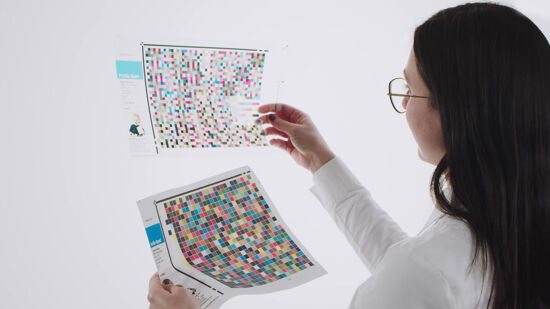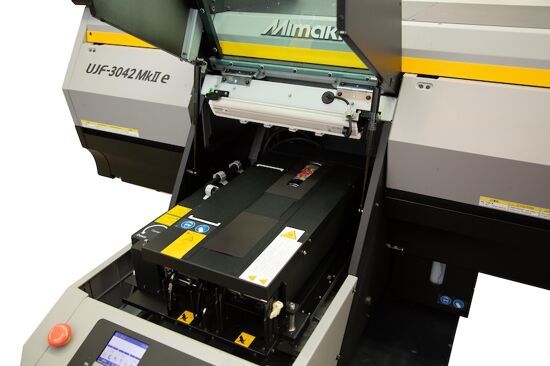What is the future of DTF printing?
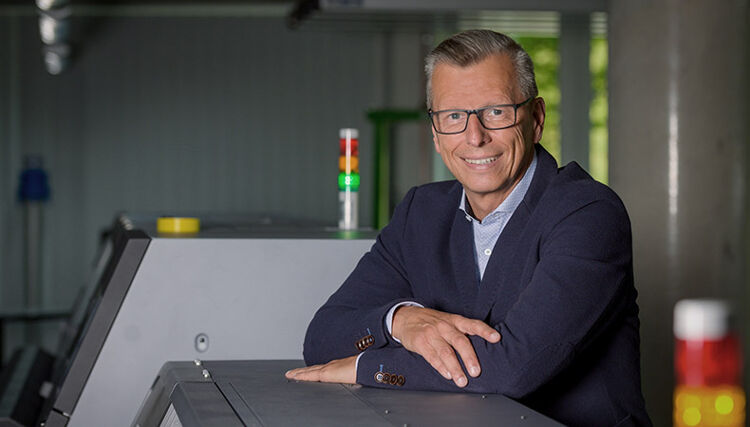
Direct-to-foil, or DTF, has completely transformed textile and apparel printing in a short period of time. Sonja Angerer discusses the current trends, the future of manufacturers and the opinions of specialist suppliers.
DTF is currently very successful and popular, there is a concern other textile printing technologies such as sublimation are being negated. DTG, i.e. direct-to-garment, has also become significantly less popular, if you take the number of machines introduced to the market in 2024 so far as a benchmark.
Achim Bukmakowski (AB), Head of Commercial & Industrial Printing at Epson Deutschland GmbH, Hisashi Takeuchi (HT), Managing Director of Mimaki Deutschland GmbH, Joachim Rees (JR), Managing Director of Multi-Plot Europe GmbH, and Assen Velev (AV), Managing Director Europe STS Inks Ltd. were interviewed by Sonja to discuss the future of textile and apparel printing.
How important is DTF technology?
AB: DTF is a very powerful printing process that has advantages especially in markets where printing is not only required on cotton, but on a wide variety of different materials.
JR: DTF is ideally suited for a wide range of apparel and fashion applications, wherever speed, locality and quality are required. But the textile promotional products market also offers many opportunities. DTF is often the only option to print on technical textiles, too.
AV: DTF has become a foundation of our company and is of great importance to us. We have made significant investments in developing innovative solutions that are industry leading. By working with our extensive customer base and our strategic partner Mutoh, we have set the standard for product improvements.
 CAPTION: DTF is today’s go-to solution for T-shirt printing. Image Credit: Mimaki Germany.
CAPTION: DTF is today’s go-to solution for T-shirt printing. Image Credit: Mimaki Germany.
Where is DTF typically used?
HT: We are noticing a wide variety of companies with DTF printing operations. On the one hand, there are textile finishers who have previously ordered their DTF films from a partner. On the other hand, there are copy shops and sign makers that have done textile finishing with flex and flock films before, maybe they also have already some experiences with sublimation printing.
AV: The greatest opportunities with Direct-to-Film (DTF) technology lie in sectors where custom, high-quality, and versatile printing on a wide range of materials is in demand. It fits the needs of the market producers of Custom Apparel and Merchandise including corporate branding and promotional Items, e-commerce platforms and print-on-demand services, interior decor and soft furnishings, uniform and office wear printing, niche fashion brands and independent designers requiring fast turnaround times.
Do we still need digital textile printing technologies such as DTG or sublimation anymore?
JR: All textile technologies have strengths and weaknesses. Sublimation is better suited for large prints, as it does not alter the textile surface, but only works well on white polyester. DTF can be used very broadly for clothing and textiles, even if coloured. All types of fibres and even blended fabrics made of cotton and polyester can also be printed onto.
AB: Today, DTF and DTG printing solutions are mainly used in the finishing of textiles and apparel. For polyester-based fabrics, such as those used in sportswear, interior design or soft signage, sublimation printing is the preferred choice.
In addition, various types of inks are used for direct printing on textiles, such as reactive, dispersion, acid and pigment inks. This enables roll-to-roll printing on a wide range of fabrics, from cotton to silk to synthetic materials. To meet the diverse requirements of the textile industry, a wide range of inks and printing solutions will continue to be used in the future.
HT: The DTG process is a practical solution for one-off production. The clear advantages of DTF are the wide variety of textiles that are suitable and the fact that not every step in the workflow must be done manually. For example, the printing and subsequent powder coating runs without human intervention.
Sublimation printing also remains an important textile printing process. There are ecological and regional aspects that consumers are increasingly sympathetic to.
 CAPTION: The DTF printer XPD-924D from STS is based on Mutoh hardware. Image Credit: STS
CAPTION: The DTF printer XPD-924D from STS is based on Mutoh hardware. Image Credit: STS
Will DTF make textile screen printing unnecessary?
JR: DTF will once again take a lot of market share away from screen printing. Screen printing has a different quality but requires a large print run and specialist personnel. DTF is possible for everyone who is looking for great quality without too much manpower required.
 CAPTION: Hisashi Takeuchi, Managing Director of Mimaki Deutschland GmbH: "In November 2024, the Mimaki DTF series will be expanded with the TXF300-1600 model, which is 1.60 m wide." Image Credit: Mimaki Europe.
CAPTION: Hisashi Takeuchi, Managing Director of Mimaki Deutschland GmbH: "In November 2024, the Mimaki DTF series will be expanded with the TXF300-1600 model, which is 1.60 m wide." Image Credit: Mimaki Europe.
What is the future of DTF?
JR: DTF is here to stay. DTF has already massively changed textile finishing. New business models with online printers, fast and flexible production of DTF film and easy pressing on almost all textiles are the pillars of this application.
AV: DTF is currently mainly used in the clothing industry, but there are also endless possibilities beyond that. Just imagine all the textiles that surround us every day, from curtains to bed sheets, not to mention countless industrial applications. The development of DTF technology is moving towards an efficient, scalable and environmentally conscious printing process. In the future, DTF will go well beyond textiles and align closely with modern production and automation needs. We see improvements in software, a broader range of materials and finishes, improved print quality and new hybrid solutions.
What hardware does your company currently offer for DTF printing?
AB: As a leading provider of wide format printing solutions, both DTG and DTF are very important to us. We already offer users very interesting solutions with our hybrid printers from the SureColor SC-F series.
In addition to their exceptionally good print quality, the SureColor F1000, F2200 and F3000 devices also impress with their low maintenance requirements. They offer various automatic maintenance features to reduce manual intervention. Of course, we plan to expand our portfolio in the future.
AV: We offer a wide range of machines for DTF, including printers and shakers. We are very excited about the recent release of our new flagship XPD-924D DTF wide format printer, which delivers incredible speed, quality and the reliable performance we all expect from the Japanese manufacturing of our strategic partner Mutoh.
JR: As a specialist system house for textile printing , we rely on high-quality printing systems with preferably eight colours from 60 cm to 130 cm from Maegis and are also a partner of Mimaki with print widths of up to 160 cm. We are the only supplier to also have calendars from 60 cm up to 500 cm wide for DTF on offer. This also enables the production of awnings, umbrellas and technical textiles.
On 13th -14th November 2024, we hosted the Mimaki Day / Mimaki Textile Day at our technical centre in Bad Emstal, Germany.
HT: We launched the first Mimaki DTF printer, the TXF150-75, in 2023 and are proud to have achieved great success here. This year, we launched another model with two printheads (TXF300-75).
The journey continues: in November, the Mimaki DTF series will be expanded with the 1.60 m TXF300-1600 model. Not only is it wider than its predecessors, but it's also faster. We have a total of three models for all types of users, from beginners to experienced textile finishers.
At Mimaki, a lot is currently being done in the field of textile printing. For those who can't wait until the next FESPA Global Print Expo: We are represented with our systems in Munich and are ready to carry out demos and sample prints.
To discover the latest content that covers a wide range of sectors including digital and textile printing sign up for FESPA’s free monthly newsletter FESPA World available in English, Spanish and German.
Interested in joining our community?
Enquire today about joining your local FESPA Association or FESPA Direct
Recent news
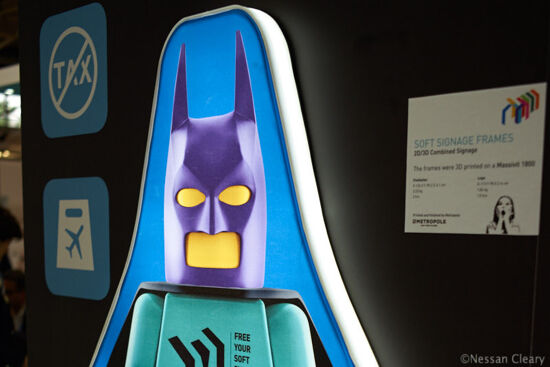
What are the opportunities for printers regarding backlit displays and window graphics?
Nessan Cleary describes the various opportunities for printers regarding window graphics. There is a wide range of materials and lighting options available.
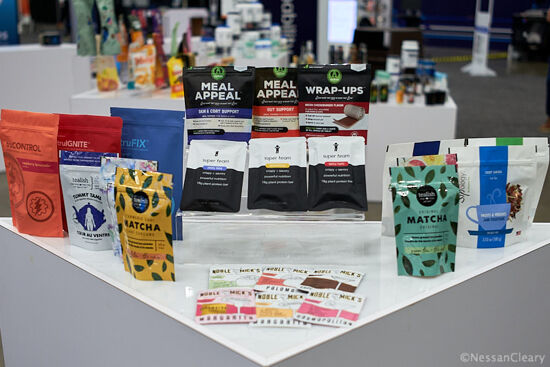
What is the difference between labels and packaging regarding narrow web printing?
Nessan Cleary shares how labelling has always been distinct from packaging but increasingly lines are becoming blurred between them.
